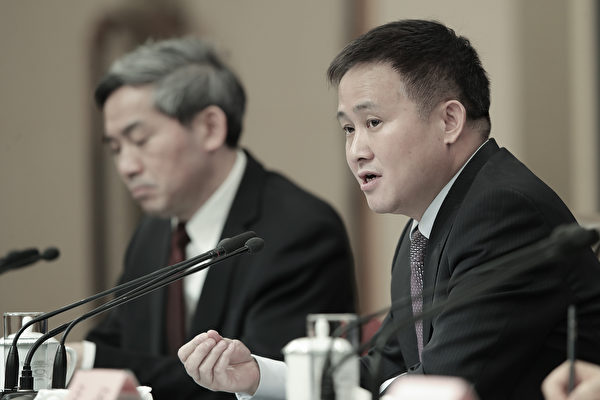The Governor of the People’s Bank of China, Pan Gongsheng, announced a series of significant economic stimulus policies on Tuesday (September 24th). However, analysts believe that these measures do not address the core issues of the Chinese economy: weak consumer spending and private investment, which may require further fiscal policy intervention in the future. Despite a subsequent rise in the Shanghai and Shenzhen stock markets, it may be difficult to sustain this momentum.
The policies unveiled by Pan Gongsheng include reducing the reserve requirement ratio by 0.5 percentage points, releasing liquidity of around 1 trillion yuan, lowering bank policy rates by 0.2 percentage points, and decreasing existing home loan rates by about 0.5 percentage points, with the minimum down payment for second home loans reduced from 25% to 15%.
According to reports from The Wall Street Journal, these policies represent the most significant economic stimulus measures introduced by the People’s Bank of China since the outbreak of the pandemic. However, several analysts argue that these policies do not address the fundamental issues of the Chinese economy, such as weak consumer spending and private investment.
Shuang Ding, Chief Economist for Greater China and North Asia at Standard Chartered Bank, stated, “The policy exceeds expectations, but the main issue facing the current economy is not insufficient liquidity.”
Analysts from Nomura noted in a report on the PBOC’s comprehensive plan that “we believe that relying solely on these monetary and financial policies is insufficient to counter the worsening economic slowdown.”
In an article titled “China’s monetary policy fails to address key threats to economic growth,” Reuters noted that the central bank’s policies did not target the primary threat to economic growth: sustained weak consumer demand.
Richard Hunter, market manager at Interactive Investor, commented that while the policies indicate that the Chinese government has recognized the need for action, they are unlikely to completely dispel the subdued sentiment among investors in recent months.
The China Beige Book highlighted in a report that companies have been reluctant to borrow for years regardless of credit conditions due to extremely low business confidence, and households are not likely to suddenly become more optimistic about consumption due to reduced deposit rates.
Capital Economics’ China Economist Evans-Pritchard warned that with households deleveraging and many private firms adopting a cautious approach to borrowing, monetary policy in China has largely lost its effectiveness.
Despite the reduction in existing home loan rates, estimated to save households 150 billion yuan annually, this only accounts for 0.12% of annual economic output, and some of it may be used for early loan repayments rather than consumption.
Yang Weixiong, Chief Economist for Greater China at ANZ Bank, estimated that for every additional 100 yuan earned by Chinese consumers, only 35 yuan is spent.
Analysts from Gavekal Dragonomics noted in a report that each major monetary policy measure announced by the People’s Bank of China has been previously used and had minimal impact on the economy. Therefore, the significance of this plan lies in whether it opens the door for other measures.
Pan Gongsheng also announced the establishment of a 500 billion yuan swap facility, allowing institutions such as insurance companies and asset management firms to invest in stocks and provide loans for share repurchases by listed companies and major shareholders, with an initial quota of 300 billion yuan.
Following these policies, the Shanghai and Shenzhen 300 Index rose by 4.3% and the Hang Seng Index in Hong Kong climbed by 4.1%. However, the Shanghai and Shenzhen 300 Index remains down by 9% year-to-date, dropping nearly 40% from its peak at the beginning of 2021.
Rory Green, Chief China Economist at TS Lombard, noted that if the stimulus measures prove successful, an additional 1.6 trillion yuan would be provided. Additionally, authorities are considering establishing a “stock market stability fund.”
He believes that this intervention in the stock market by the People’s Bank of China marks a significant departure from past practices. While the central bank previously cautioned against speculation, it now appears to be encouraging it.
Green emphasized that the stock market is a “policy- and momentum-driven market,” and there is no clearer signal than policy announcements. Nonetheless, given the persistently weak macroeconomic environment in China, this rebound should be viewed as a “trade” rather than an “investment” and approached with caution.
The A-share market’s relief rallies since 2021 have been “swift and fierce, but ultimately unsustainable.” Without serious follow-through from demand, this pattern is likely to repeat.
An economist team led by Chen Xinquan at Goldman Sachs suggested that the plan indicates a more open attitude toward easing policies by senior decision-makers, but more fiscal easing measures are needed to stimulate domestic demand.
Evans-Pritchard stated that the latest measures announced are unlikely to drive credit expansion and economic activity turnaround on their own, emphasizing the necessity of larger-scale fiscal support to achieve economic goals.
Frederic Neumann, Chief Economist for Asia at HSBC, highlighted the need for stimulating demand through fiscal policy and other measures. He noted that injecting liquidity allows the Chinese government to issue bonds, providing more room for additional stimulus measures.
Neumann added, “The markets are hopeful that liquidity injections herald a large-scale bond issuance program from the People’s Bank of China in the coming weeks.”
Song Lin, Chief Economist for Greater China at Natixis, suggested that the most direct way to stimulate the economy in the short term is by increasing government investment, though there is a growing consensus among economists for demand-side support, potentially in the form of consumption vouchers or similar policies.
In October 2023, to achieve annual growth targets, the Chinese authorities announced the issuance of an additional 1 trillion yuan in special treasury bonds to fund various infrastructure projects. The specifics of this year’s additional stimulus measures are currently unclear.

